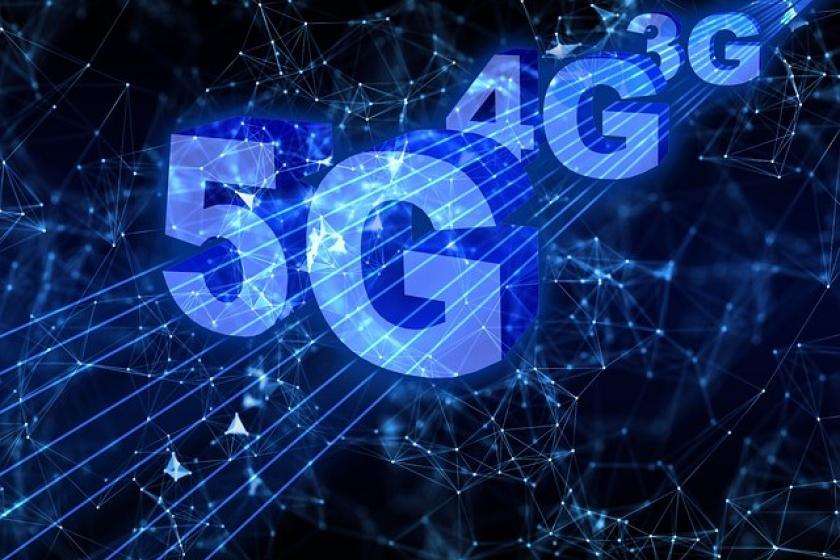Court Decision to Determine 5G Rollout Reality for Carriers and Enterprises
Municipalities seek power to handle deployment rules and regulations, while wireless operators back an FCC order designed to streamline processes in the race to 5G.
May 1, 2020

A court case that could either break a 5G deployment logjam for carriers or slow their ability to rollout next-generation wireless services in the U.S. bears interest by enterprise IT managers across the U.S.
For nearly two years, cities and towns have initiated legal action against wireless carriers claiming the gear needed for 5G services poses financial, aesthetic, and safety concerns to their populations. And most contend a 2018 Federal Communication Commission (FCC) order designed to streamline deployments for carriers is illegal.
The crux of the ongoing situation is that dozens of municipalities have established rules, time periods, and fees associated with the permitting and installation of pizza box-sized small cell antennas required by 5G rollouts in their communities. The FCC order speeds permitting periods and reduces fees by nearly 50%.
If it hasn’t already, this dispute, portends to slow carrier deployment, and hence delay enterprise use of 5G services. Carriers continue to race toward what they term “nationwide” deployment of the super-fast 5G services, which everyone from enterprises to the FCC Commissioner and current U.S. president believe can transform businesses across industries.
"The race to 5G is on, and America must win," Trump said a year ago. "According to some estimates, the wireless industry plans to invest $275 billion in 5G networks, creating 3 million American jobs quickly, and adding $500 billion to our economy." In late March, he signed a piece of legislation, the Secure 5G and Beyond Act of 2020, which is designed to address the security of 5G networks.
Small cell challenges
The differences between 4G and 5G are faster speeds, higher bandwidth, and lower latency. Next-generation 5G services are expected to enable and justify applications such as IoT device-powered smart cities. Also identified uses include automated factories, telehealth, and eventually self-driving vehicles. These game-changing use cases, however, will require broader coverage, which means billions of dollars for new infrastructure. Battles with municipalities over implementations could be something wireless carriers can’t afford.
Unlike 4G, which required large cell towers that were not popular with many municipalities, 5G uses far smaller, pizza box-sized antennas - and lots of them.
The number of deployed small cells is expected to increase by a factor of nearly 10 in from 2018 to 2026, according to The State of Wireless – 2018, a report from the CTIA, a wireless communications industry trade association. This expected increase, the CTIA directed, “underscores the importance of every level of government modernizing its wireless infrastructure rules.”
The crux of the issue is whether the FCC can limit what cities and towns can charge carriers to set up small cells attached to their infrastructure (e.g., light poles). Under the FCC’s rule, local governments can charge providers $270 in access fees each year per cell site, roughly half of the pre-rule $500 national average.
A key issue is whether the agency can establish periods of time for the approval or denial of carriers’ applications to create the small cells. This was also part of the FCC’s 2018 ruling.
As the legal action continues, another concern for carriers rolling out 5G services is that the rules, permitting time periods, and fees are not uniform. They are piecemeal and vary from municipality to municipality, a fact that can slow service rollouts.
Aesthetics and safety concerns
Municipalities have also opposed carrier 5G deployments for aesthetics reasons and voiced strong safety concerns over the amount of radiation emitted from the cells. Some communities are concerned since the 5G gear is located closer to people than in previous cell tower-based wireless service deployments.
Montgomery County, Maryland, and others filed a brief in the case versus the FCC that over the potential health risks associated with radio frequency emissions from 5G technology. “As thousands of these transmitters will be densely packed into residential areas and public spaces, citizens began to ask their local officials whether these installations will be safe,” wrote lawyers for this county and other municipalities.
In its brief, and on behalf of other municipalities in the suit, Montgomery County requested the FCC re-evaluate its 24-year old radio frequency standards and decide whether they “will adequately protect public health and safety.”
Guidance for IT Managers
As with other services wired and wireless, enterprises are largely at the mercy of carriers and their network deployments. The contentious situation has already had a slowing effect on rollouts dating back to Verizon suing the City of Rochester, NY, over its rules and regulations for building a network in the city back in 2018.
Municipalities across the country involved in the consolidated suit against the FCC, it’s best that IT managers interested in using 5G now or in the foreseeable future closely monitor the case in San Francisco however possible.
One way or the other, the outcome of the court case will have a one-step removed impact on IT managers across industries looking to implement 5G in their network infrastructure planning efforts. Close communications with carriers should help enterprises keep best apprised of crucial 5G rollout information.
The stakes are high given the ability of 5G to transform current business applications and enable many promised game-changing IoT-based opportunities.
Related Network Computing articles:
Read more about:
5GAbout the Author
You May Also Like




